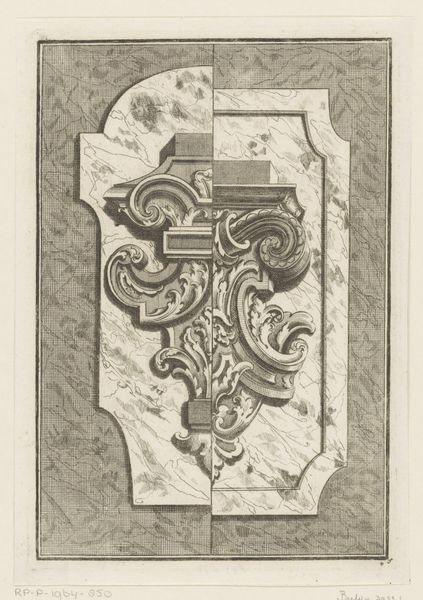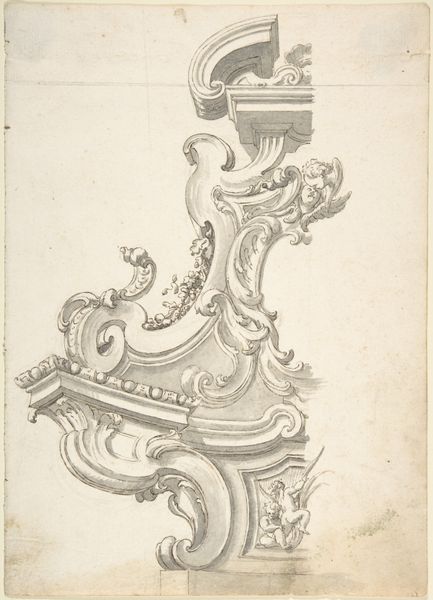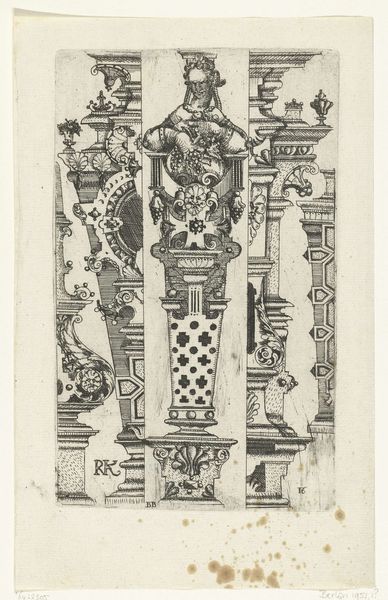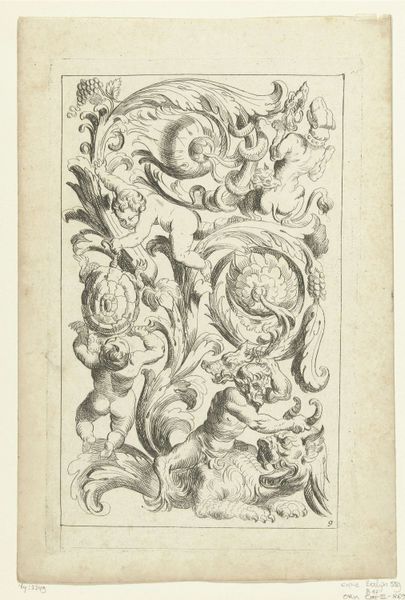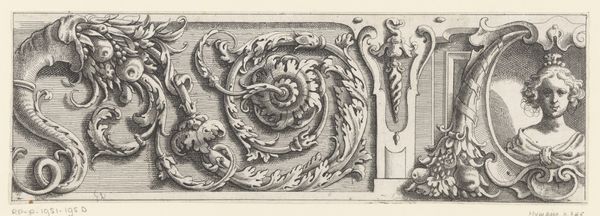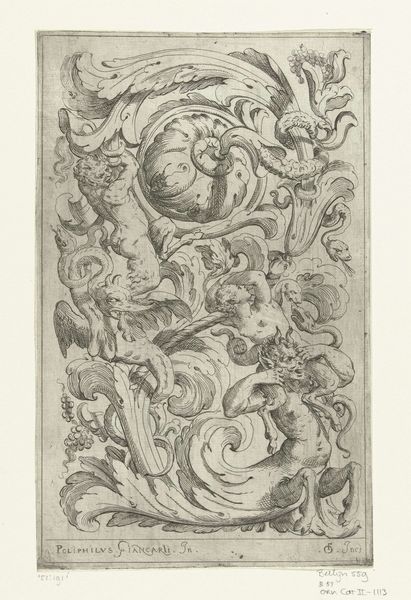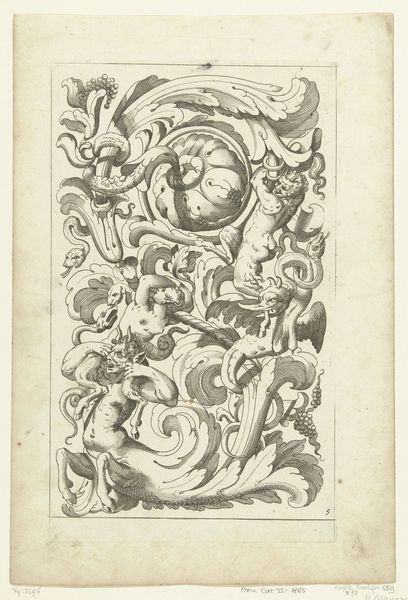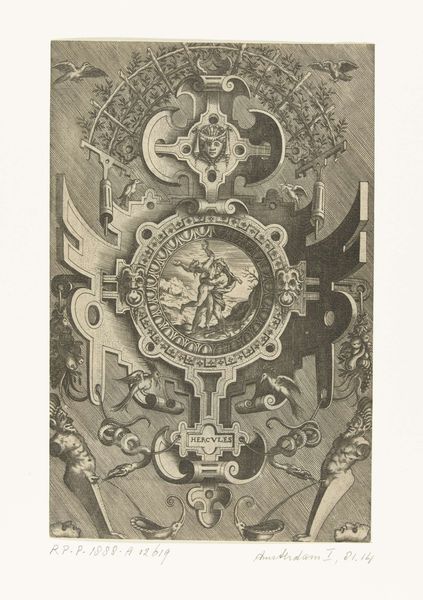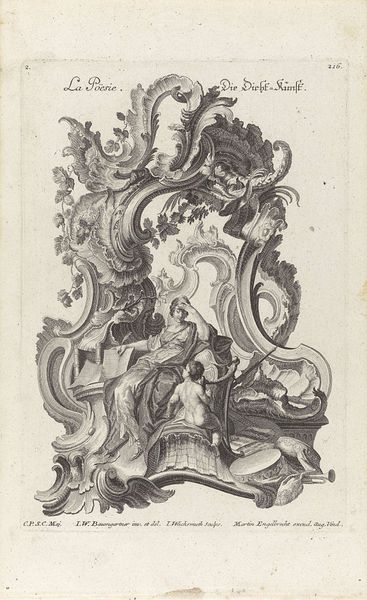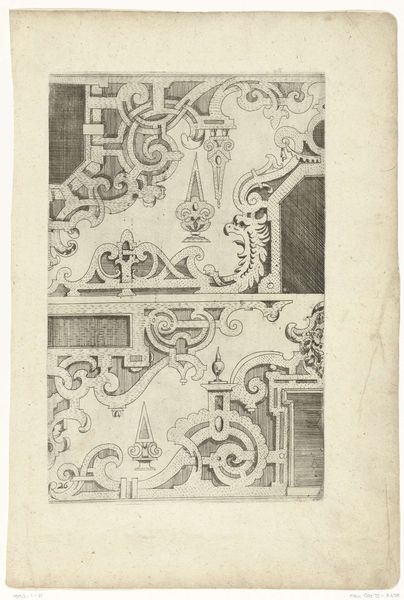
engraving, architecture
#
baroque
#
form
#
decorative-art
#
engraving
#
architecture
Dimensions: height 211 mm, width 146 mm
Copyright: Rijks Museum: Open Domain
Curator: The print before us, "Console met bekroning," comes to us from between 1699 and 1726. This engraving is part of the Rijksmuseum's collection. What is your initial response? Editor: Intricate! I'm immediately drawn to the detailed symmetry, bisected so deliberately. There's a clear distinction in texture, form, and finish on either side that feels rather jarring, almost a study in contrasts. Curator: Indeed, it’s a fascinating demonstration. The division encourages us to deconstruct the individual components of Baroque design and, more broadly, its formal principles. We might consider how semiotics impact our reception of ornament here. Editor: And I wonder about its practical purpose within society then. Was this disseminated to potential clients or craftsman, informing the aesthetic choices in homes of a certain social strata, or perhaps churches and civic buildings of the period? Curator: Precisely! It serves as a catalogue for disseminating visual concepts of that era to craftsmen and architects across regions and, therefore, influences visual culture and architecture, thereby cementing particular aesthetics in the collective mindset. Look closely at the floral embellishments; consider how such designs served political purposes—displays of power. Editor: Absolutely. It’s not simply about decoration. The ornate detailing underscores prestige and aspiration, intended for spaces where wealth was performed and consolidated, reflecting power dynamics present across various sectors in that historical moment. This was a demonstration of luxury that mirrored existing socio-political systems. Curator: I see how you connect ornament and cultural expression, considering this architectural design's power. But zooming into this design, how does its geometry shape or misguide the viewer's focus on the work itself? The lack of narrative feels very deliberate to me; instead, the emphasis appears strictly to be visual and textual. Editor: That visual and textual focus, that promotion and circulation of the ‘ideal,’ surely plays a crucial role in shaping perceptions, influencing design choices within specific economic conditions or social structures… By exploring that framework, we acknowledge the inherent power in dictating and curating the forms around us. Curator: A valuable note on contextual forces shaping forms and reception. Looking deeper at how patterns and textures are contrasted and replicated allows a greater perception of art itself. Thank you. Editor: My pleasure; observing through your formal perspective unveils dimensions of design interwoven with politics!
Comments
No comments
Be the first to comment and join the conversation on the ultimate creative platform.
